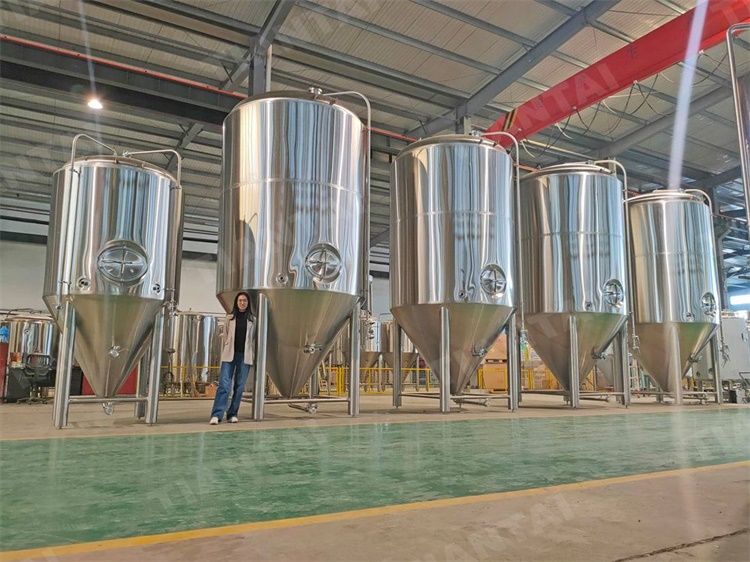Is it necessary to consider more thick interior shell for industrial beer fermentation tanks?
Industrial beer fermentation tanks play a crucial role in the brewing process, providing an environment for yeast to ferment and convert sugars into alcohol and carbon dioxide. The design and construction of these tanks must consider various factors, including the interior shell thickness. This essay will explore the importance of interior shell thickness in industrial beer fermentation tanks and discuss the key considerations that brewers should keep in mind.1. Operating Pressure and Stress: One of the primary considerations for determining the interior shell thickness is the operating pressure within the fermentation tank. During the fermentation process, yeast produces carbon dioxide, which generates pressure inside the tank. The interior shell must be designed to withstand this pressure without deforming or compromising the tank's integrity.
2. Additionally, the interior shell thickness should be sufficient to handle the mechanical stresses exerted by the weight of the beer and any agitators or mixing equipment inside the tank. A thicker interior shell can provide structural stability and prevent deformations or failures that could lead to leaks or accidents.
3. Material Selection: The choice of material for the interior shell is crucial in determining the necessary thickness. Stainless steel is commonly used due to its excellent corrosion resistance, durability, and ease of cleaning. Different grades of stainless steel offer varying mechanical properties, such as tensile strength and yield strength, which influence the required thickness.
4. It is important to consider factors such as the chemical composition of the beer, acidity, temperature, and cleaning agents used in the brewery. Certain brewing processes or ingredients may introduce corrosive elements, which should be taken into account when selecting the appropriate material and thickness for the interior shell.
.jpg)
5. Hygienic Requirements: Maintaining proper hygiene is essential in the brewing industry to prevent contamination and ensure the quality and safety of the final product. The interior surface of the fermentation tank should be smooth, free of imperfections, and easily cleanable to eliminate potential bacteria or yeast growth.
6. A thicker interior shell can facilitate the installation of sanitary fittings, such as spray balls or CIP (clean-in-place) systems, which are necessary for effective cleaning and sterilization. These fittings require proper reinforcement to withstand the forces applied during cleaning procedures.
7. Safety Factors and Regulations: To ensure the safety of operations, it is common practice to incorporate safety factors into the design of fermentation tanks. These safety factors provide an additional margin of safety beyond the expected operating conditions. The specific safety factor may vary depending on local regulations, industry standards, and the risk tolerance of the brewery.
8. Conclusion: In conclusion, the interior shell thickness of industrial beer fermentation tanks is a critical consideration that affects the tank's performance, structural integrity, and hygiene. The operating pressure, material selection, hygienic requirements, and safety factors all play crucial roles in determining the appropriate thickness. Brewers should consult with knowledgeable professionals to ensure the design and construction of their fermentation tanks meet the necessary standards and ensure the production of high-quality and safe beer.
Edited by Vincent
Email: [email protected]


.jpg)



Get In Touch